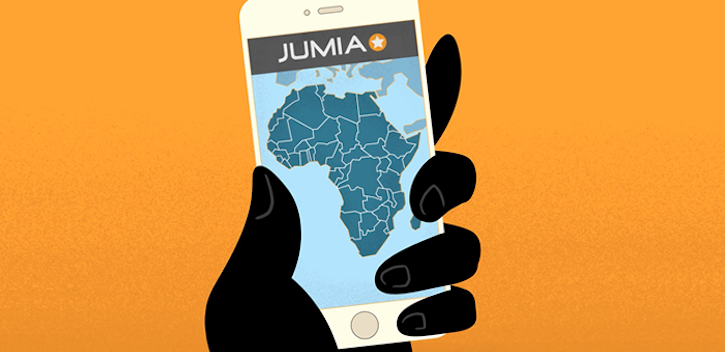Smartphone use has considerably increased in the last few years: there are currently 2 billion users around the world and by 2020, 90% of the population will fit into this category.
The arrival of the smartphone has had an impact on how shoppers make purchases today: m-commerce represents 35% of global online sales. This new way of shopping is quickly gaining speed and is showing 300% higher growth than ecommerce.
Today we’re sharing an overview of the global m-commerce landscape, focusing on the leaders in the sectors in terms of growth and spend.
Japan: half of online sales come from mobile and tablet

A recent Criteo study found that Japan, the UK, and South Korea are the countries where m-commerce has the highest proportion of online sales.
In Japan, the world leader in m-commerce, half of online sales come from mobile and tablet devices. The market is already very mature, with Japanese consumers citing online shopping as their second favorite after email. The country is also home to the ecommerce giant Rakuton, the 11th largest company in the world, with more than 105000 members and 44000 online retailers.
The UK takes second place, with m-commerce accounting for 46% of global online sales. According to a report by SimilarWeb, the UK has impressive mobile traffic rate of 64%, the highest in the world.
South Korea came in third, with 45% of online shoppers buying through mobile. This doesn’t come as such a big surprise, as the country has the highest level of smartphone usage in the world, with 88% of the population owning one.
In Denmark, m-commerce is growing 5x faster than ecommerce

Denmark, Norway and Sweden have the highest m-commerce growth rate according to a study by PayPal & Ipsos.
With an annual average growth rate of 55% between 2013 and 2016, mobile shopping in Denmark has grown 5 times faster than e-commerce, which has only grown at a rate of 11%.
Norway and Sweden followed in 2nd and 3rd place, with growth rates of 54% and 52%, respectively. By comparison, the average of the 22 countries in the study was only 42%.
This strong growth rate in the Nordic countries can be explained by several factors:
- The smartphone penetration rate is growing rapidly. Denmark is set to outpace other countries by 2017;
- Consumers in these countries are very attached to their smartphone. 58% say that they keep their smartphone within arm’s reach for at least 20 hours per day.
The UK, Germany and France represent 88% of mobile sales in Europe

According to RetailMeNot, European mobile spending was highest in the UK, Germany and France. They account for 88% of European mobile sales.
A UK consumer spends on average €732 per year on their mobile purchases for a total of 14 transactions. In Germany, this average reaches only €659 per year for a total of 12.9 transactions. French mobile shoppers spend €522 per year on average and make 10.5 purchases a year. By comparison, American consumers spend €678 per year on mobile.
70% of Chinese shoppers make purchases on their smartphone

A study by MasterCard found that China, India and Taiwan were the m-commerce leaders in Asia. 70.1% of Chinese consumers, 62.9% of Indian consumers and 62.6% of Taiwanese consumers have made online purchases from their smartphones in 2014.
Not surprisingly, China dominates this category while also being the world leader in ecommerce. Several e-commerce giants can be found there – Alibaba, Baidu, Tencent – and the country suffers from a weak physical retail distribution network, making online shopping very popular.
India and Taiwan also have impressive m-commerce growth rates: the number of people buying on their smartphones has doubled between 2012 and 2014 in both countries.
Amazon and Apple: m-commerce world leaders

Of the top 10 global leaders in m-commerce, 6 are American, 3 are Chinese and one is German.
Amazon leads the pack in mobile sales, with $16.8 billion revenue in 2014. The American giant’s strengths lies in its vast product selection, low prices and large network of merchants.
Apple comes in at second place, with $14 billion in m-commerce revenue. It is currently trying to reach top spot by focusing on one of the pain points of mobile shopping – payment – by launching the Apple Pay service.
Following far behind in third place is the Chinese retailer JD.COM, with $4.4 billion in revenue.
Google Play ($4.4 billion), QVC ($1.9 billion), Walmart ($1.4 billion), Otto Group ($1.3 billion), Suning Group ($1.3 billion), Sears ($0.9 billion) and Xiaomi ($0.9 billion) make up the rest of the top 10 group.
M-commerce on the rise, but still facing adoption challenges
While there are numerous studies on mobile shopping, they all show the same findings: Asia – most notably Japan, China, and South Korea – the US, the UK and Scandinavian countries as global leaders in m-commerce.
It is important to keep in mind that while mobile shopping is on the rise, it still faces psychological barriers: only 20% of Americans feel that mobile payments are 100% secure.







